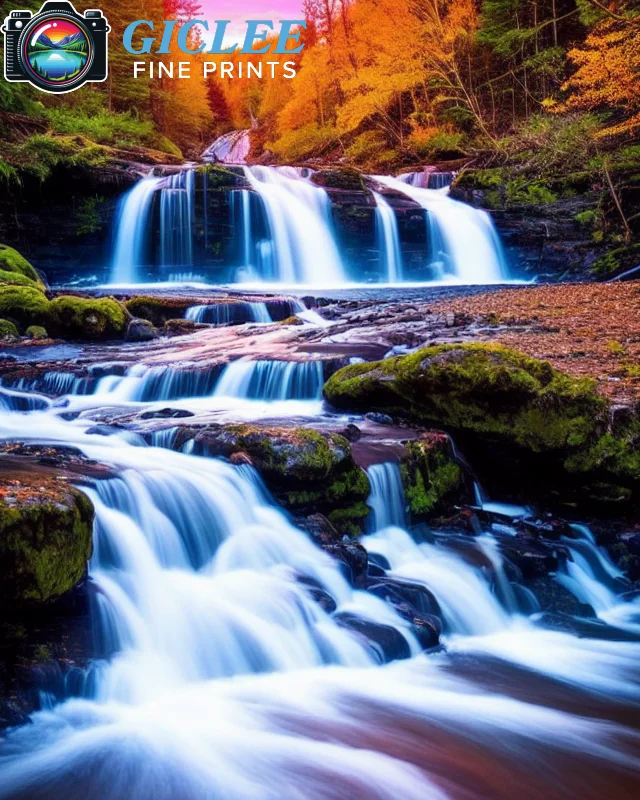
One of the most rewarding parts of home or office design is the ability to infuse each space with personality—and nothing achieves that better than carefully chosen artwork. Yet, selecting the right style, medium, or color palette to mesh with your decor can feel overwhelming at first. At Giclee Fine Prints, we’ve seen how thoughtful art choices can truly elevate a room. Here’s how to match art to your interior design preferences so that every corner of your home or workplace reflects a unified, taste-driven narrative.
Identify Your Core Aesthetic
The best place to start is by defining—or reaffirming—your existing interior design style. Are you drawn to minimalism’s clean lines, or do you lean toward rustic textures and warm hues?
Modern / Minimalist
- Simplified forms, neutral walls, sleek furniture.
- Art Approach: Abstract pieces or monochromatic photography that echo simple shapes or subtle color accents. Consider glossy metal prints for a streamlined finish.
Traditional / Classic
- Ornate woodwork, antique furnishings, formal layouts.
- Art Approach: Landscape paintings, classic portraits, or timeless still life prints in substantial frames. Canvas or fine art paper within ornate frames complements this style beautifully.
Bohemian / Eclectic
- Bold textiles, layered rugs, curated vintage finds.
- Art Approach: Mix-and-match mediums (canvas, metal, or prints in diverse frames). Embrace global motifs, bright colors, or freeform abstracts. A gallery wall can capture your love of variety.
Industrial / Contemporary
- Exposed brick, metal fixtures, open layouts.
- Art Approach: Large-scale abstract or photography on metal or acrylic, enhancing the edgy, modern feel. Strong lines or monochrome palettes keep it cohesive with industrial textures.
Outcome: Identifying the overarching aesthetic helps you zero in on artwork that naturally aligns—both in color story and thematic resonance.
Leverage Color for Cohesion
Color coordination can make or break an art display. Even if you choose contrasting hues, doing so intentionally ties the space together:
Accentuate Existing Colors
- Pick up on the accent shade from pillows, a rug, or curtains. Reflect it in the artwork’s focal elements.
- If you have mostly neutral furniture, a bold pop of color in a painting can act as the room’s statement piece.
Complementary vs. Analogous
- Complementary: Opposite colors on the wheel (e.g., blue vs. orange) generate a lively tension.
- Analogous: Adjacent colors (like greens and blues) create a calming, harmonious effect.
Consider Mood
- Warm, earthy tones often cozy up a room; cooler palettes can soothe or energize, depending on brightness.
Pro Tip: Observe your space at different times of day. Natural light will shift color perceptions, so pick art that continues to look appealing under varied lighting conditions.

Factor in Scale and Layout
Hanging a tiny photo on a massive, empty wall leaves an imbalanced impression—and vice versa. Aim for proportional synergy between art size and the room’s dimensions:
Anchor Large Walls
- A single oversized print can grab attention from across the room.
- Alternatively, a grid or gallery wall of multiple smaller works can fill the space with engaging variety.
Think About Eye Level
- Typically, the artwork’s center should sit around 57–60 inches from the floor.
- When placing art above furniture, keep the bottom edge 6–12 inches above it (depending on furniture height).
Spacing and Groupings
- For multiple pieces, keep 2–3 inches between frames for cohesive spacing.
- If mixing different mediums (like canvas with framed prints), ensure some unifying element—like color or subject matter—so they harmonize.
Why It Matters: Proper scaling and arrangement create a polished look, emphasizing each artwork rather than making it feel lost or cramped.
Choose Mediums That Complement the Setting
The medium you pick can shape how art interacts with your decor. Consider:
Canvas
- Offers texture and a classic painterly vibe.
- Gallery-wrapped edges suit modern or eclectic rooms; framed canvas can lean more traditional.
Fine Art Paper
- Ideal for photography, delicate illustrations, or prints needing a refined, possibly matted and framed approach.
- Great if you want a more formal gallery look.
Metal Prints
- Sleek, reflective surfaces pop in industrial, contemporary, or minimal spaces.
- Amplifies vibrant colors or high-contrast black-and-whites.
Peel-and-Stick Wall Art
- A flexible, damage-free option for rentals or multi-purpose rooms.
- Swap or reposition with minimal fuss—perfect for those who often redecorate.
Outcome: Tailoring medium to the environment ensures your chosen art not only looks good but meshes seamlessly with the room’s functional and stylistic requirements.

Add Personal Touches
Lastly, remember that interior design is personal—it should speak to your experiences, memories, and tastes:
Family Photos
- Turn treasured images into large-scale canvas or fine art prints.
- Curate them in black-and-white or a consistent color theme for a cohesive statement.
Travel Souvenirs or Personal Artwork
- Print high-resolution photos from memorable trips—like city skylines or scenic vistas.
- Showcase your own sketches or paintings—having an original piece always adds an intimate layer.
Mix in Collectible Pieces
- If you have inherited art or unique crafts from local artists, integrate them.
- Use complementary frames or unify them through a consistent color accent to tie it all together.
Why It Resonates: Personal elements ensure your space feels authentic—more than just a styled set, it’s a reflection of your journey, identity, and creativity.
Why Work with Giclee Fine Prints?
At Giclee Fine Prints, our goal is to elevate your living space through quality printing solutions—from canvas to fine art paper, metal prints, or peel-and-stick mediums:
- Archival-Grade Quality: Every print is produced with fade-resistant inks and top-tier materials, ensuring lasting vibrancy.
- Precision and Care: Our calibrated printers capture every detail and hue—critical for matching your interior’s desired palette.
- Personalized Service: Not sure which medium suits your décor? Need custom sizing or test proofs? We’ll guide you at each step.
Contact Us
Our address is: 3816 Pioneer Trail Ste #3, South Lake Tahoe, CA 96150
Email: Info@gicleefineprints.com
FAQs
Not necessarily. Coordinating or complementary colors are a good approach, but high-contrast artwork can be just as compelling—adding a bold, eye-catching statement.
It depends on size, style, and personal preference. A large statement piece might suffice in minimalistic spaces, while eclectic styles may call for multiple smaller works in a gallery arrangement.
Absolutely! Consider consistent framing or a unifying color accent so diverse styles appear intentionally curated.


